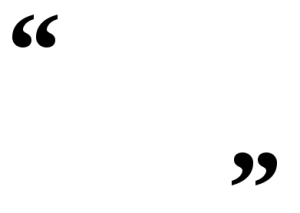Why Speech Marks?
20 Mar 2012 | No Comments | posted by Megan Onions | in Me, The Business of Translation
Although I’m not necessarily new to blogging (I have blogged as part of in-house and non-translation work) this is the first post on my own blog, so I thought I would explain the story behind my choice of company name: Speech Marks Translation.
As we translators and language professionals well know, the devil’s in the detail when it comes to our work. One of these seemingly small aspects of language is punctuation, which some people tend to ignore, or at least consider less significant than words or larger elements of language.
It is these small details such as using the correct forms of speech marks (e.g. “word”) in English, guillemets (ex. <<mot>>) in French and Anführungszeichen (z.B. „Wort“) in German, which give a polish to a translation and show that you know your stuff.
However, in my capacity as an editor of translated documents and a proofreader of texts written by non-native speakers, I have noticed that punctuation, quotation marks and decimal figures in particular, are common corrections that I have to make. Not necessarily because the writer or translator is unaware of the differences in conventions, indeed, it is one of the basic stages of foreign language learning, but more likely because these elements are simply overlooked.
My aim is always to provide the highest quality translation, taking great care to tailor my work to the relevant audience and purpose, which involves several working stages. This intensive yet considered philosophy is one that I intend to weave into the fabric of my masterpiece (or chef-d’oeuvre – one of my favourite French words), Speech Marks Translation.
Do any of you have a particular pet peeve when editing or proofreading? I would love to know that I’m not alone!







 Megan’s proofreading has been very beneficial to me. I appreciate her accurate linguistic knowledge of English, and especially her stylistic recommendations.
Megan’s proofreading has been very beneficial to me. I appreciate her accurate linguistic knowledge of English, and especially her stylistic recommendations.
